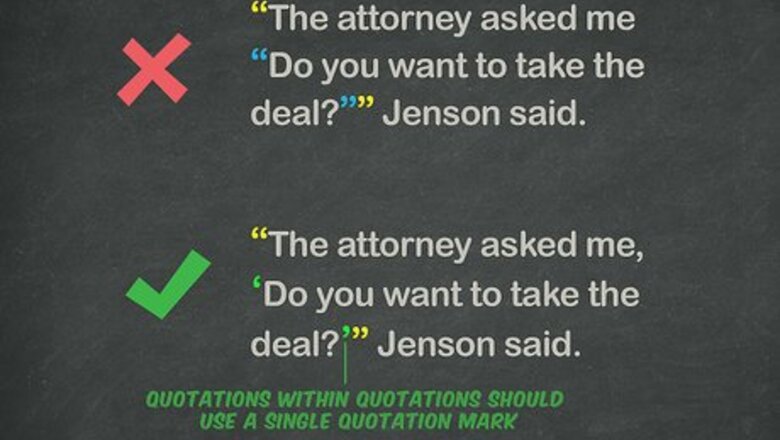
views
Using Quotation Marks With Other Punctuation
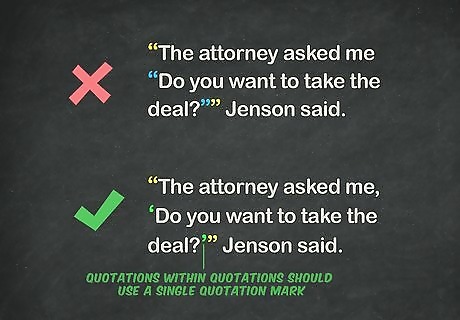
Use single quotation marks to indicate the speaker is quoting someone. Quotations within quotations should use a single quotation mark. This helps the reader understand that it is not the speaker’s words they are reporting, but rather those of another person. For example, don’t write: “The attorney asked me “Do you want to take the deal?”” Jenson said. A correct use of quotation marks in that sentence would read: “The attorney asked me, ‘Do you want to take the deal?’” Jenson said.
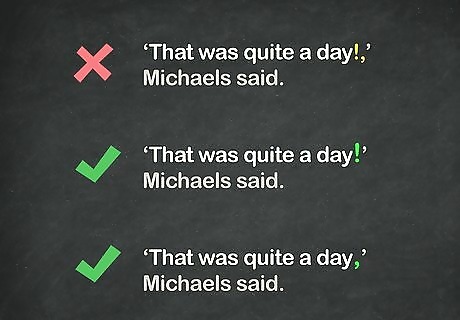
End a direct quotation with just one form of punctuation. For instance, don’t write “‘That was quite a day!,’ Michaels said.” In that example, the quotation ends with both an exclamation mark and a comma. Instead, choose either the comma or the exclamation mark and omit the other.
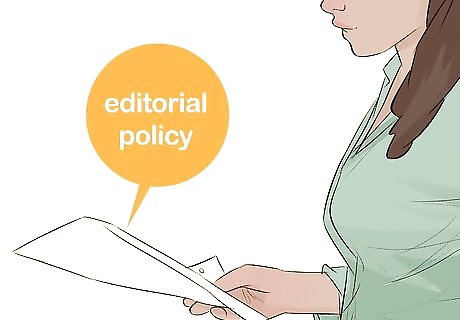
Follow your editorial policy. Some magazines or newspapers choose not to conform to standard use of quotation marks in their news articles. Your editorial policy might, for example, require you to use italics instead of quotes around titles of books, movies, and TV shows. You might need to include different punctuation in place of quotation marks. Ensure that you understand and conform to your editorial policy when using quotation mark in your news article.
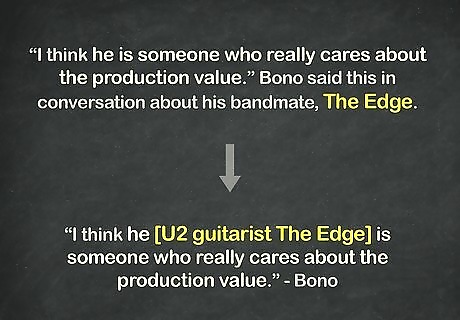
Use brackets to fill in missing information in a quote. Sometimes, quotes utilize pronouns that have no meaning unless you know who or what the pronoun refers to. If you wish to use such a quote, you can replace the pronoun or fill in the missing information with brackets. For instance, you might want to quote Bono as saying, “I think he is someone who really cares about the production value.” Bono said this in conversation about his bandmate, The Edge. When you publish the quote, you could adjust it to read, “I think [U2 guitarist The Edge] is someone who really cares about the production value.” In this way, you can use quotes that would otherwise not make sense if quoted directly word-for-word. Alternately, you could leave the original pronoun in the quote, and write “I think he [U2 guitarist The Edge] is someone who really cares about the production value.” Do not substitute parentheses for brackets, as this indicates that the information in the parentheses was said by the speaker of the quote, rather than added by you.
Quoting People
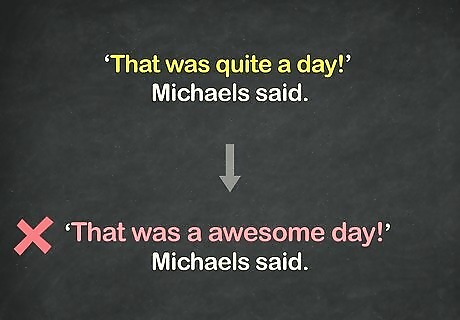
Use quotes to show what was said. Attributing quotes to a certain person is the primary way in which quotes are used in news articles. Always be sure to quote your subjects accurately. If you are unsure, double check with them as to what they said or consult your recording of the interview. Never alter quotes.
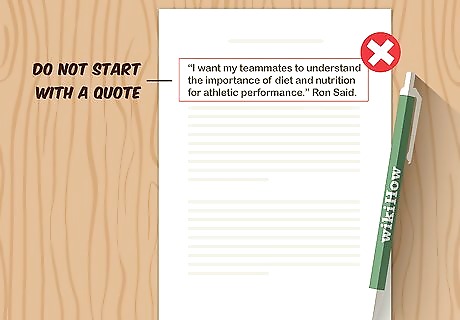
Do not start an article with a quote. It is bad journalistic practice to open an article with a quote. This is because a quote rarely has the power to sum up the story on its own. Provide at least a full paragraph of explanatory text before introducing quotes from the main actors involved in the story. If you intend to use quotes at all in your story, introduce them in the third or fourth paragraph. One exception is when writing longer feature articles in a news magazine or, less commonly, in a newspaper.
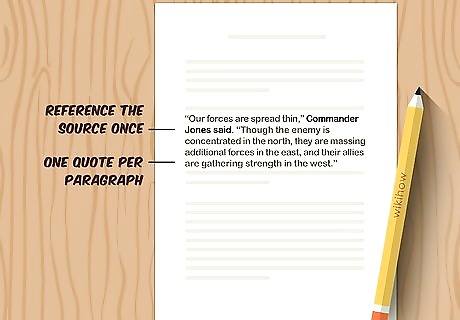
Use quotations sparingly. Quotes can add flavor and color to your news article, but only when used thoughtfully. Don’t overuse quotes or string them together in long, multi-paragraph passages. One quote per paragraph is often enough. However, if you choose to include a longer paragraph consisting of mostly or entirely quoted material, you only need to reference the source once. For instance, you could write: “Our forces are spread thin,” Commander Jones said. “Though the enemy is concentrated in the north, they are massing additional forces in the east, and their allies are gathering strength in the west.”

Avoid partial quotes. Snippets of quotes are best referenced without quotation marks. For instance, do not write: The party was “surprised” by the speed voters abandoned it. “Surprised” is a fairly typical word and not very memorable, and can therefore be referenced as indirect speech without quotes. Instead, write the same sentence without the quotation marks. In the case of unusual phrases or language, partial quotes are acceptable. For instance: Senator Michaels was “bowled over” by the response to his legislation. This vocabulary choice is unusual and may indicate something about Senator Michaels’ personality.
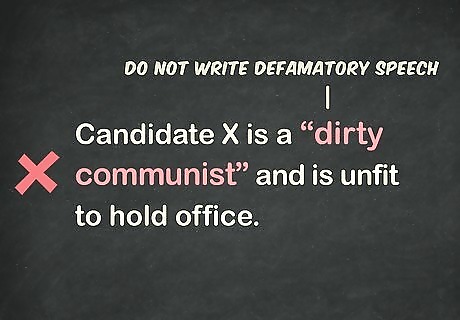
Understand quotation marks do not protect defamatory speech. Defamatory speech is false or misleading speech that harms the reputation of a person, group, or organization. Some people believe that enclosing inflammatory speech within quotation marks will eliminate the possibility that they can be sued for defamatory speech. However, this is not so. For instance, suppose you write the following sentence: Candidate X is a “dirty communist” and is unfit to hold office. Assuming Candidate X is not a communist, you could be sued for utilizing defamatory speech, even though you enclosed “dirty communist” in quotation marks.
Adjusting Material Within Quotation Marks

Explain the quoted material as needed. Explanatory writing is usually the best way to give context to quoted material. If the quote is unclear or needs to be given additional context as in the case of a strange idiom from another culture, you might choose to include the explanation in parenthesis within the quotation marks. By including an understandable translation of the idiom within the quotation marks, you can save space on long sentences that would be needed to otherwise explain the idiom. For instance, you could write: “Unscrew yourself from yourself! (Relax and don’t worry!)” Explanation might also be needed to clarify the referent of a given quote. For example, if a politician says, “They are way too high,” you could revise the quote for added clarity by writing, “[Taxes] are way too high.” The brackets indicate you’ve inserted the word “taxes” in place of the speaker’s original word choice.
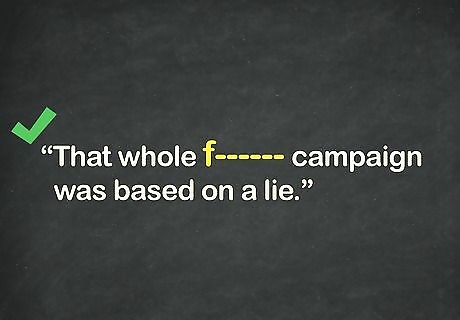
Clean the quote. Cleaning refers to the removal of foul language. Many news articles prohibit the use of profanity. To replace the profane words within the quotation marks, use the first letter of the profane word and replace the rest of the letters with dashes. For instance, you could write: “That whole f------ campaign was based on a lie.”

Use an ellipsis to remove unnecessary words. Sometimes, you can condense a speaker’s meaning by eliminating excess information. For example, a speaker might say, “We intend to continue moving in the right direction, along with our allies and partner nations, to keep the country safe and secure.” If your article is primarily about the nation’s security and not about its relationship with other countries, you can omit the extraneous words by writing: “We intend to . . . keep the country safe and secure.” Be very careful when using an ellipsis to remove words from a quotation. Always stay true to the speaker’s original intention.
Indicating Titles

Use quotation marks around titles of creative works. Book titles should have their names in quotations. “Catch-22,” “Jurassic Park,” and “War and Peace,” for instance, should all be enclosed by quotation marks. Use quotation marks to indicate the titles of movies, too. “Star Wars,” “Hannibal,” “Superman,” and other films need quotation marks around them. Other literary names and titles -- including poems, articles, chapter titles, and plays -- should likewise be surrounded by quotation marks. “Romeo and Juliet” and “Howl,” for instance, are the correct ways to refer to those works.
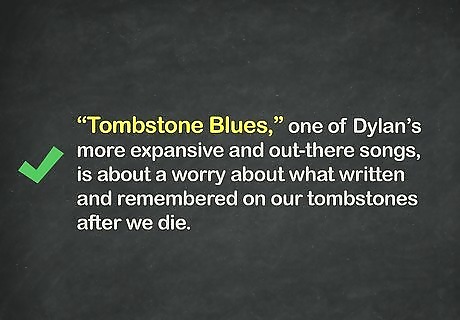
Use quotation marks around names of songs. For instance, you might write a news article about songs such as “We Will Rock You,” “Just Like Heaven,” or “Tonight, Tonight.” Always use quotation marks when referring to song names. Do not enclose band names in quotation marks. Treat these as you would proper names and use appropriate spelling and capitalization.
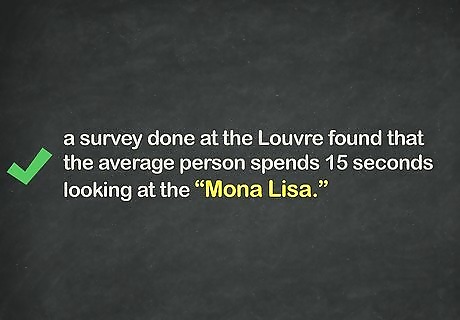
Enclose the names of paintings in quotation marks. For instance, “Mona Lisa,” “The Persistence of Memory,” and “Nighthawks” are the correct forms for those works. Sculptures, however, should not be enclosed in quotation marks, though their titles are capitalized.














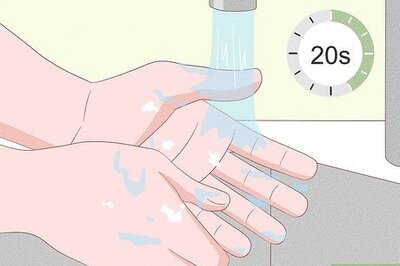





Comments
0 comment